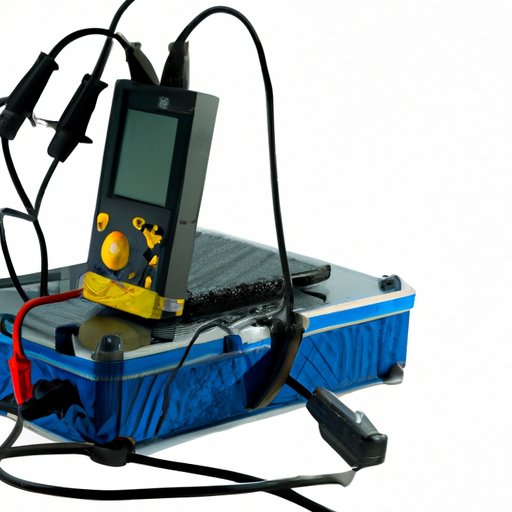I. Introduction
Car owners often face the problem of a dead car battery, especially during the winter season. It can be frustrating and time-consuming to call a mechanic or a tow truck for assistance. Knowing how to recharge your car battery at home can save you time and money. This guide will provide several methods for recharging car batteries at home, using simple tools and equipment.
II. Basic Safety Measures
Before attempting to recharge your car battery at home, it is important to take basic safety measures. Wear proper clothing, gloves, and eye protection to avoid any acid spilling on you. Make sure your work area is well-ventilated, and avoid sparks and flames. Never smoke or light up anything around the battery. Handle battery acid carefully and dispose of unwanted batteries responsibly and safely.
III. Method 1: Using a Battery Charger
A battery charger is a tool that is used to recharge car batteries by connecting them to a power outlet. Before using a battery charger, read the instructions carefully and ensure the charger is suitable for your car battery. Here are the step-by-step guide to using a battery charger:
- Locate the battery and remove any covers or accessories on it.
- Connect the positive cable (usually red) to the positive terminal of the battery.
- Connect the negative cable (usually black) to the negative terminal of the battery.
- Plug in the charger to a power outlet and turn it on.
- Wait for the battery to be fully charged, as indicated by the charger or a voltmeter.
Some common problems when using a battery charger include improper cable connection, overheating, or undercharging. Make sure to follow the instructions and troubleshoot any issues before proceeding.
IV. Method 2: Using a Solar-Powered Charger
A solar-powered charger is an eco-friendly and portable method to recharge car batteries. This method uses solar panels to capture sunlight and convert it into electrical energy. Here’s how to use a solar-powered charger:
- Place the solar panel in a sunny spot near the car battery.
- Connect the positive cable to the positive terminal of the battery.
- Connect the negative cable to the negative terminal of the battery.
- Wait for the battery to be fully charged, which may take several hours.
Make sure to use a solar-powered charger that is compatible with your car battery, and follow the manufacturer’s instructions for use and maintenance.
V. Method 3: Jump-Starting the Car
If you don’t have a battery charger or solar-powered charger available, jump-starting the car may be a viable option. Here’s how to jump-start a car using jumper cables:
- Locate another car with a good battery and park it close to your car.
- Connect one end of the positive cable (usually red) to the positive terminal of the dead battery.
- Connect the other end of the positive cable to the positive terminal of the good battery.
- Connect one end of the negative cable (usually black) to the negative terminal of the good battery.
- Connect the other end of the negative cable to a metal surface away from the battery of the dead car.
- Start the good car and let it run for a few minutes.
- Try starting the dead car. If it does not start, wait a few more minutes and try again.
Make sure to disconnect the cables in the reverse order of connection, and avoid touching the metal ends of the cables together, which can cause a spark.
VI. Method 4: Using a Portable Power Bank
A portable power bank is a convenient and portable option for recharging car batteries. This method uses a battery-powered device that can be charged through a power outlet or a car charger. Here’s how to use a portable power bank:
- Locate the positive and negative terminals of the battery.
- Connect the positive cable to the positive terminal of the battery.
- Connect the negative cable to the negative terminal of the battery.
- Connect the power bank to the cables.
- Turn on the power bank and wait for the battery to be fully charged.
Make sure to use a portable power bank that is suitable for your car battery, and follow the manufacturer’s instructions for use and maintenance.
VII. Conclusion
Recharging a car battery at home can save you time and money, and it’s not as difficult as it may seem. This guide has provided four methods for recharging car batteries at home, using simple tools and equipment. Make sure to take basic safety measures, such as wearing proper clothing and avoiding sparks and flames. Follow the instructions carefully for each method and troubleshoot any issues. To maintain your car battery and avoid dead batteries in the future, make sure to check the battery regularly and avoid leaving any accessories on when the car is not in use. Share your experience and tips for recharging car batteries at home, and help others save time and money.
(Note: Is this article not meeting your expectations? Do you have knowledge or insights to share? Unlock new opportunities and expand your reach by joining our authors team. Click Registration to join us and share your expertise with our readers.)
